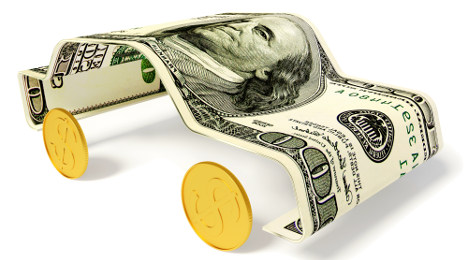Another view of vehicle values & recovery rates

Photo from Shutterstock.com
By subscribing, you agree to receive communications from Auto Remarketing and our partners in accordance with our Privacy Policy. We may share your information with select partners and sponsors who may contact you about their products and services. You may unsubscribe at any time.
ATLANTA –
Cox Automotive chief economist Tom Webb cautioned watchers of the auto ABS market as well as managers who compute severity of loss at finance companies. Webb insisted that softening wholesale values and what vehicles might be fetching at the auction are not the only components potentially dragging on recovery rates and impacting financial statements.
Webb acknowledged during this final conference call for the company that the recovery rate on repossessions “have been very troubling for some lenders as of late.”
For example, Consumer Portfolio Services reported that as of Dec. 31, its finance receivables related to the repossessed vehicles in inventory totaled $40.1 million. CPS applied a valuation adjustment, or loss allowance, of $28.9 million, which was based on a recovery rate of approximately 28 percent.
And over at Nicholas Financial, the company reported at the close of the third quarter of its fiscal year that its write-off to liquidation percentage rose to 12.35 percent. Nicholas Financial defined this metric as net charge-offs divided by liquidation, which is the beginning receivable balance plus current period purchases minus voids and refinances minus ending receivable balance.
When explaining how he sees severity of loss, Webb said, “Please do not write this up as simply lower wholesale used-vehicle values. In many cases, that was the minor factor.
“Clearly if you inflate your loan-to-value ratio to 130 percent, your severity of loss will increase. But it’s even more than that,” he continued. “Just how squishy is that quote value in the loan-to-value ratio. Value is an editorialized guidebook assumption at the time of the contract origination, not the market value at the top of repossession. More importantly, what exactly is in that value figure? Service contracts? Fancy wheel rims etc. at $150 a pop? Or even the possible stealth hiding of negative equity to empower booking?”
Subscribe to Auto Remarketing to stay informed and stay ahead.
By subscribing, you agree to receive communications from Auto Remarketing and our partners in accordance with our Privacy Policy. We may share your information with select partners and sponsors who may contact you about their products and services. You may unsubscribe at any time.
With conjecture about diminishing recoveries impacting underwriting decisions — especially in the subprime space — Webb compared the situation to the fable, “The Boy Who Cried Wolf.” As you might recall, the story goes on about a shepherd boy who repeatedly tricks nearby villagers into thinking wolves are attacking his flock. When one actually does appear and the boy again calls for help, the villagers believe that it is another false alarm.
“In the end, there was a wolf,” Webb said.
So is credit availability about to be eaten up like a wolf might devour a sheep?
“I do expect that some time credit conditions will roll over,” Webb said. “Whether they roll over gently or not remains to be seen. That will put an additional downward pressure on used-vehicle values.”
Views on residual values
During the conference call, Webb also explained how changing used-vehicle values might be misunderstood in the leasing arena, as well. Of course, residual values are a huge factor since new-vehicle leasing constituted a roughly 30 percent of new-vehicle deliveries in 2016, according to reports released each quarter from Experian Automotive.
“It is not inconsistent for the Manheim Index to show high and stable pricing while at the same time our commercial consignors are reporting larger end-of-term lease losses and lower repo recovery rates. There are two simple reasons for that,” Webb said.
“First, the bleed-over from new-vehicle pricing. Let’s put it in very simple terms,” he continued. “Basically, the Manheim Index today has been flat for years. It was 124.4 in March 2014 versus 124.1 today. Meanwhile new-vehicle transaction prices rose from $32,073 to $34,342 today, according to Kelley Blue Book.
“Thus, if your three-year lease residual written in 2014 was at 45 percent, that meant an end-of-term dollar amount of $14,433,” he went on to say. “If wholesale pricing was flat, as it was, then at today’s new-vehicle pricing you would need to reduce your residual percentage to 42 percent. Well, we all know lessors did not reduce their residual assumptions. Indeed they raised them.
“So let’s face it, residual setting remains very much a look-in-the rear-view mirror type of exercise,” Webb added.
Webb also mentioned the return rate — a vehicle not bought by the grounding dealer nor by the lessee — is currently running at about 50 percent to 55 percent. Webb emphasized that level is much less than back in 2002 when return rates soared past 80 percent as many commercial banks got into the leasing game and the remarketing industry wasn’t as evolved as nowadays.
“As you get a wider spread between contract residuals and market values it certainly goes up,” he said. “As you get a higher number of units, it certainly goes up.
“We expect it to go up, but it will not go anywhere close to what it was in the last lease cycle in 2002,” Webb continued. “The primary difference is leasing is primarily controlled by the captive finance companies. They have a lot of carrots and sticks to get the grounding dealer to buy that vehicle at end of term. Of course, they offer that dealer a fair market price, not the contract residual.
“The reason a grounding dealer would pass is simply because he has too many of that particular model. He might have that particular car already in stock, so they’ll pass,” he went on to say.


